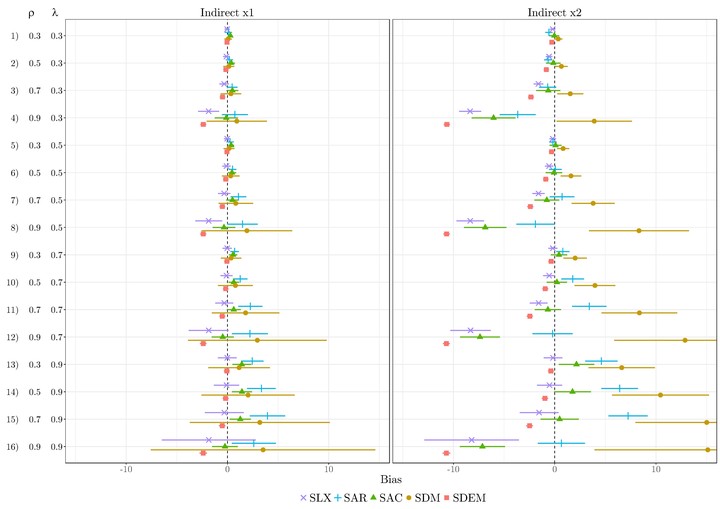Spatial Regression Models: A Systematic Comparison of Different Model Specifications Using Monte Carlo Experiments

Abstract
Spatial regression models provide the opportunity to analyze spatial data and spatial processes. Yet, several model specifications can be used, all assuming different types of spatial dependence. This study summarizes the most commonly used spatial regression models and offers a comparison of their performance by using Monte Carlo experiments. In contrast to previous simulations, this study evaluates the bias of the impacts rather than the regression coefficients and additionally provides results for situations with a nonspatial omitted variable bias. Results reveal that the most commonly used spatial autoregressive and spatial error specifications yield severe drawbacks. In contrast, spatial Durbin specifications (SDM and SDEM) and the simple spatial lag of X (SLX) provide accurate estimates of direct impacts even in the case of misspecification. Regarding the indirect “spillover” effects, several—quite realistic—situations exist in which the SLX outperforms the more complex SDM and SDEM specifications.